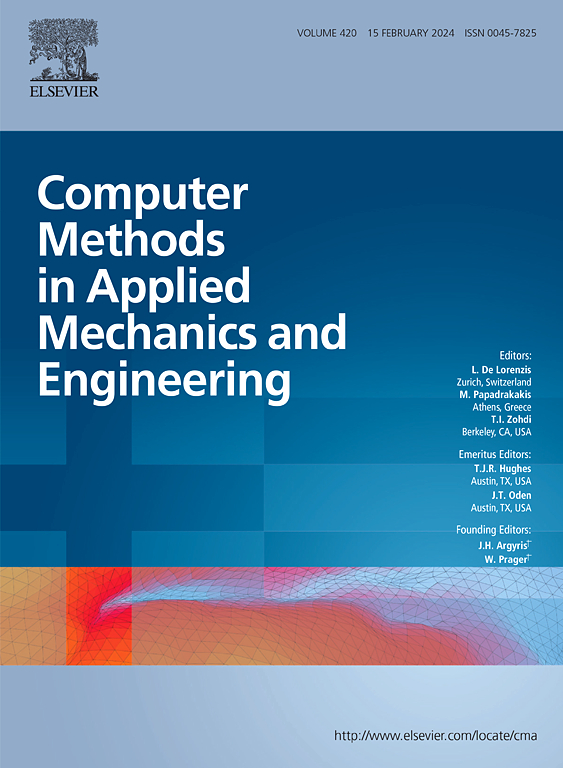A clustering-based multiscale topology optimization framework for efficient design of porous composite structures
IF 6.9
1区 工程技术
Q1 ENGINEERING, MULTIDISCIPLINARY
Computer Methods in Applied Mechanics and Engineering
Pub Date : 2025-03-11
DOI:10.1016/j.cma.2025.117881
引用次数: 0
Abstract
The optimization design of the microstructures and their macro distribution in porous composite structures (PCS) offers significant potential for achieving both lightweight and functional performance. This paper proposes a novel optimization design framework for PCS with varying densities and multiple microstructures. Initially, components topology optimization (TO-Components) using ordered SIMP interpolation is applied to determine the type and density distribution of void, solid and porous materials. Following this, element stress state analysis calculates the stress-to-density ratio (se) for each porous material element. A two-level k-means++ clustering method, based on se and density, then replaces the widely used manual partitioning, enabling optimal subregion division for the specified number of microstructure types. This approach identifies representative unit cells (RUCs) for the subsequent topology optimization of RUCs (TO-RUCs). The TO-RUCs process designs the microstructures of each RUC using homogenization theory to minimize strain energy. Three benchmark numerical examples take only 1 to 2 min to complete the full-scale design. Additionally, the scalability of the design for both uniform and variable density PCS is explored. The comparison examples demonstrate that the proposed method reduces optimization time by an order of magnitude while maintaining consistent full-scale compliance, using the same material quantity, compared to existing methods. Finally, additive manufacturing and mechanical testing of the optimized structures confirm the performance benefits.

求助全文
约1分钟内获得全文
求助全文
来源期刊
CiteScore
12.70
自引率
15.30%
发文量
719
审稿时长
44 days
期刊介绍:
Computer Methods in Applied Mechanics and Engineering stands as a cornerstone in the realm of computational science and engineering. With a history spanning over five decades, the journal has been a key platform for disseminating papers on advanced mathematical modeling and numerical solutions. Interdisciplinary in nature, these contributions encompass mechanics, mathematics, computer science, and various scientific disciplines. The journal welcomes a broad range of computational methods addressing the simulation, analysis, and design of complex physical problems, making it a vital resource for researchers in the field.

 求助内容:
求助内容: 应助结果提醒方式:
应助结果提醒方式:


